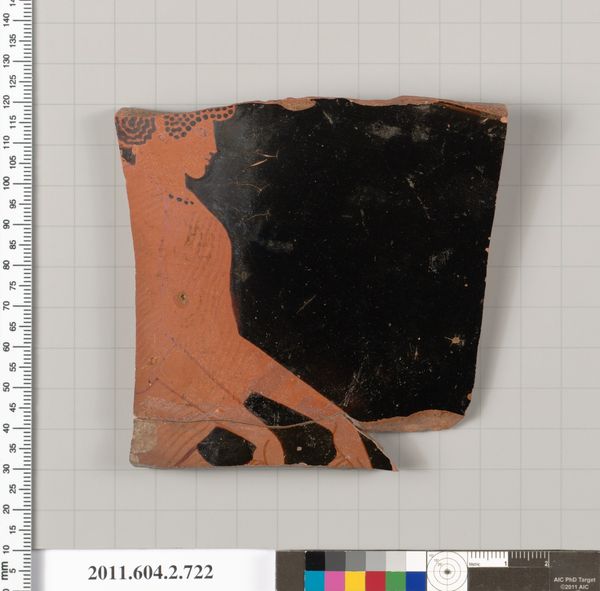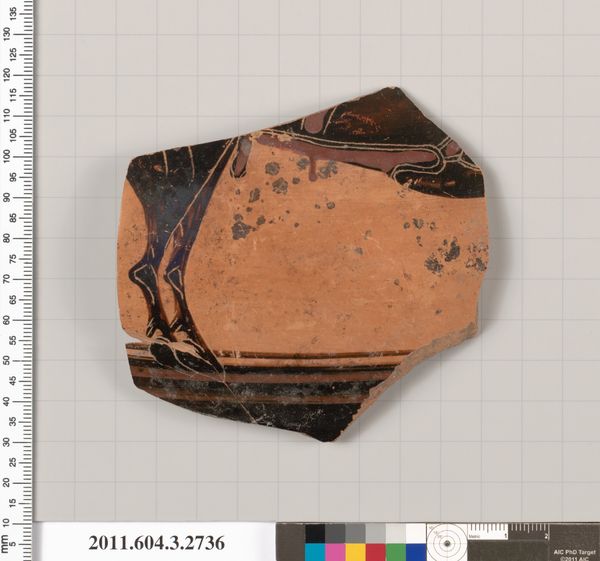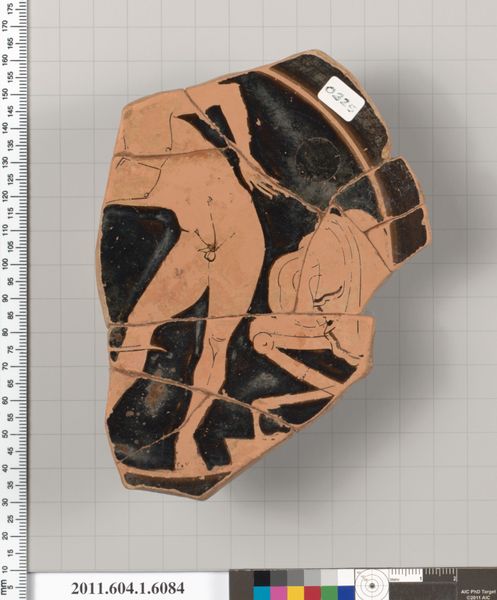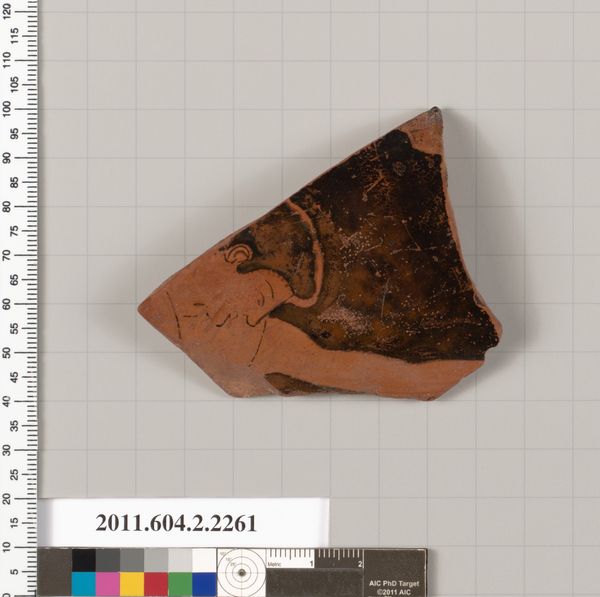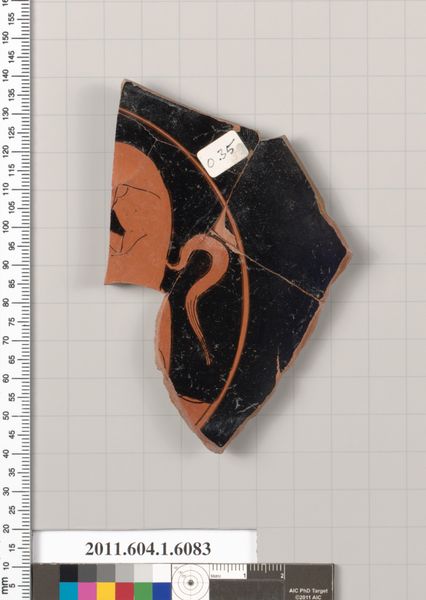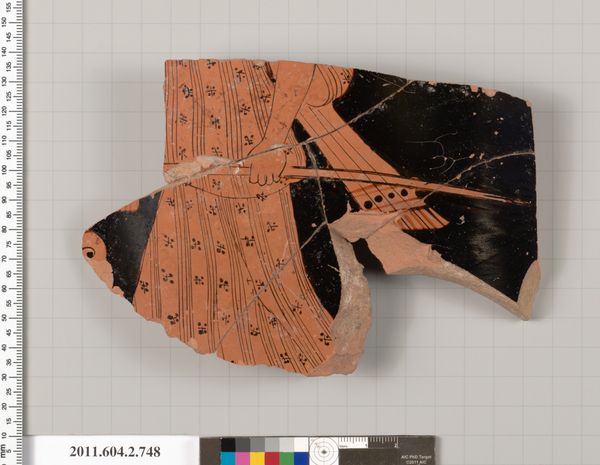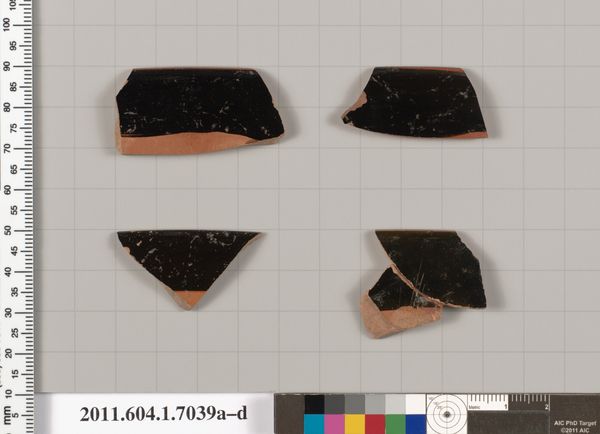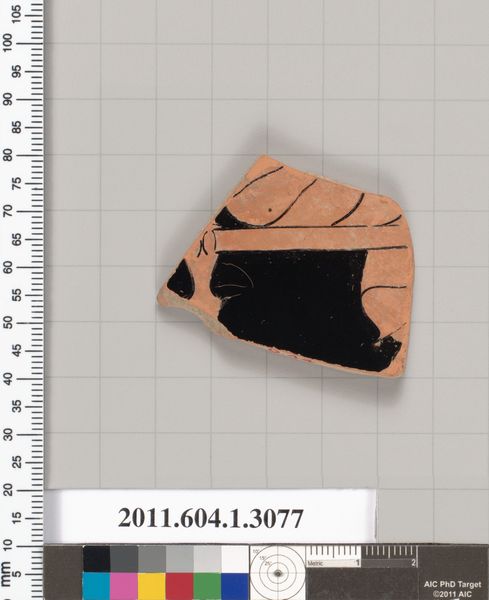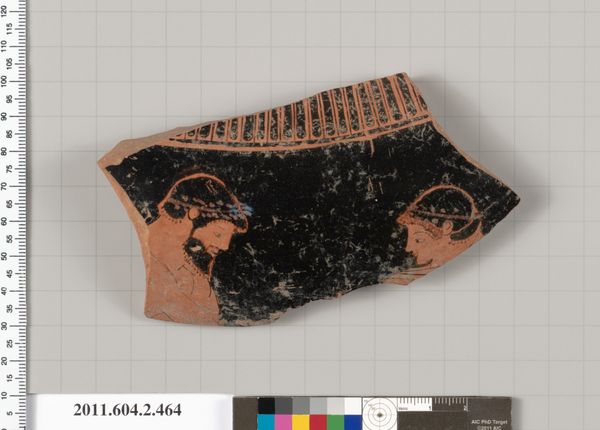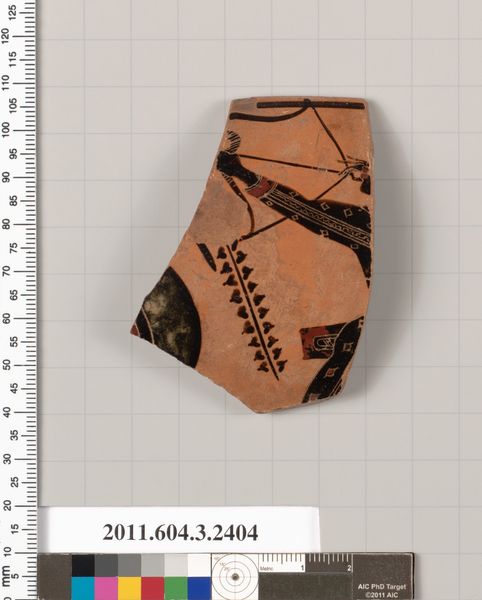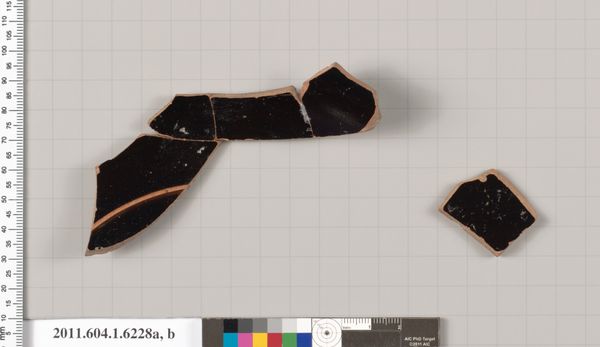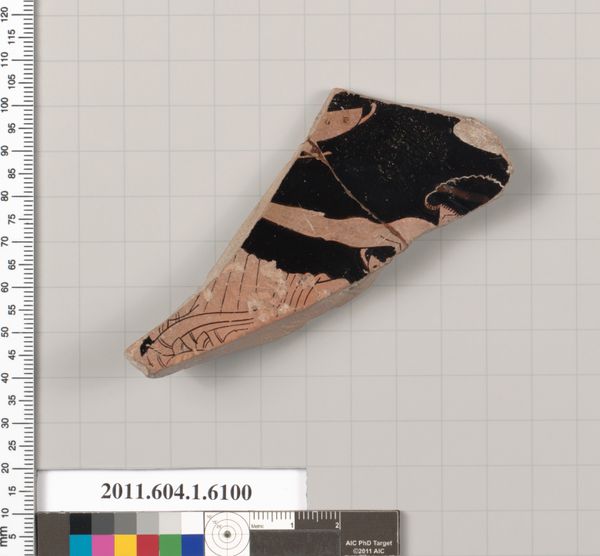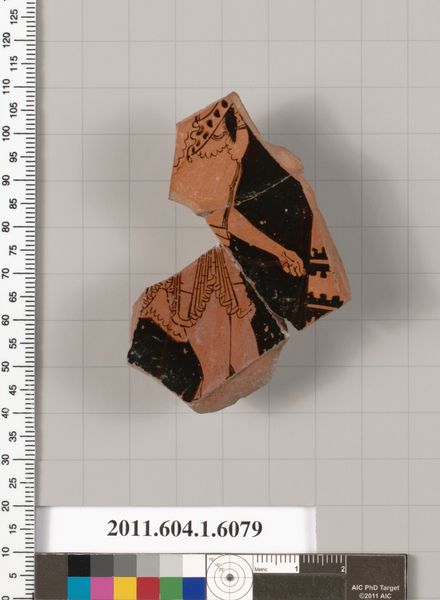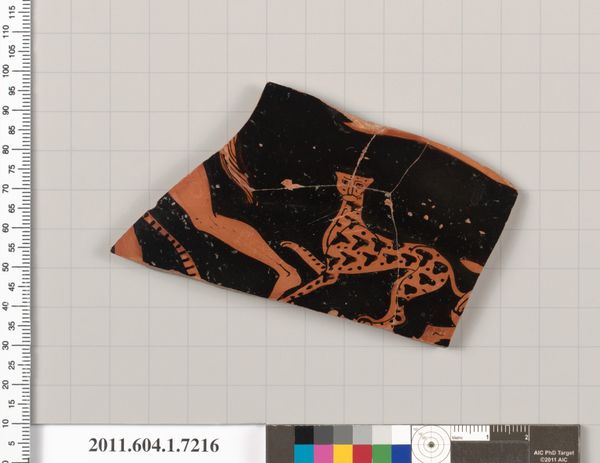
Terracotta fragment of a calyx-krater (bowl for mixing wine and water) 530 BC
0:00
0:00
painting, ceramic, terracotta
#
painting
#
greek-and-roman-art
#
ceramic
#
vase
#
painted
#
roman-art
#
geometric
#
ancient-mediterranean
#
line
#
terracotta
Copyright: Public Domain
Editor: We’re looking at a fragment of a terracotta calyx-krater, a bowl for mixing wine and water, dating back to 530 BC. The piece is from ancient Greece and is currently housed at the Metropolitan Museum of Art. I'm struck by how bold the black paint looks even now; it must have been quite something when it was new. What can you tell me about the context of this object? Curator: Well, this krater fragment offers us a fascinating window into ancient Greek social practices and the crucial role ceramics played in their culture. Consider its function: wine was central to symposia, elite gatherings, and these painted kraters weren't just utilitarian, they were status symbols, used during sophisticated drinking parties. Think about how access to them may have reflected power within Greek society. Editor: So it wasn't just about having a nice vase; it reflected social standing? Curator: Precisely. The decoration, while fragmentary now, likely depicted mythological scenes or events, shaping and reflecting shared cultural narratives. How does its survival in fragment form influence our modern interpretation of this work and the vase? Does the museum enhance that impact for its guests or not? Editor: It’s almost like a puzzle, imagining the missing pieces and the complete narrative it once told. Perhaps its incompleteness highlights its age and how fragmented histories often are? It's pretty fascinating. Curator: Yes, and remember museums display items in a space that is not how they were initially used or consumed, for educational reasons. Editor: That definitely shifts my perspective. I’ll consider the impact of how and where an artwork is seen moving forward. Thanks!
Comments
No comments
Be the first to comment and join the conversation on the ultimate creative platform.
